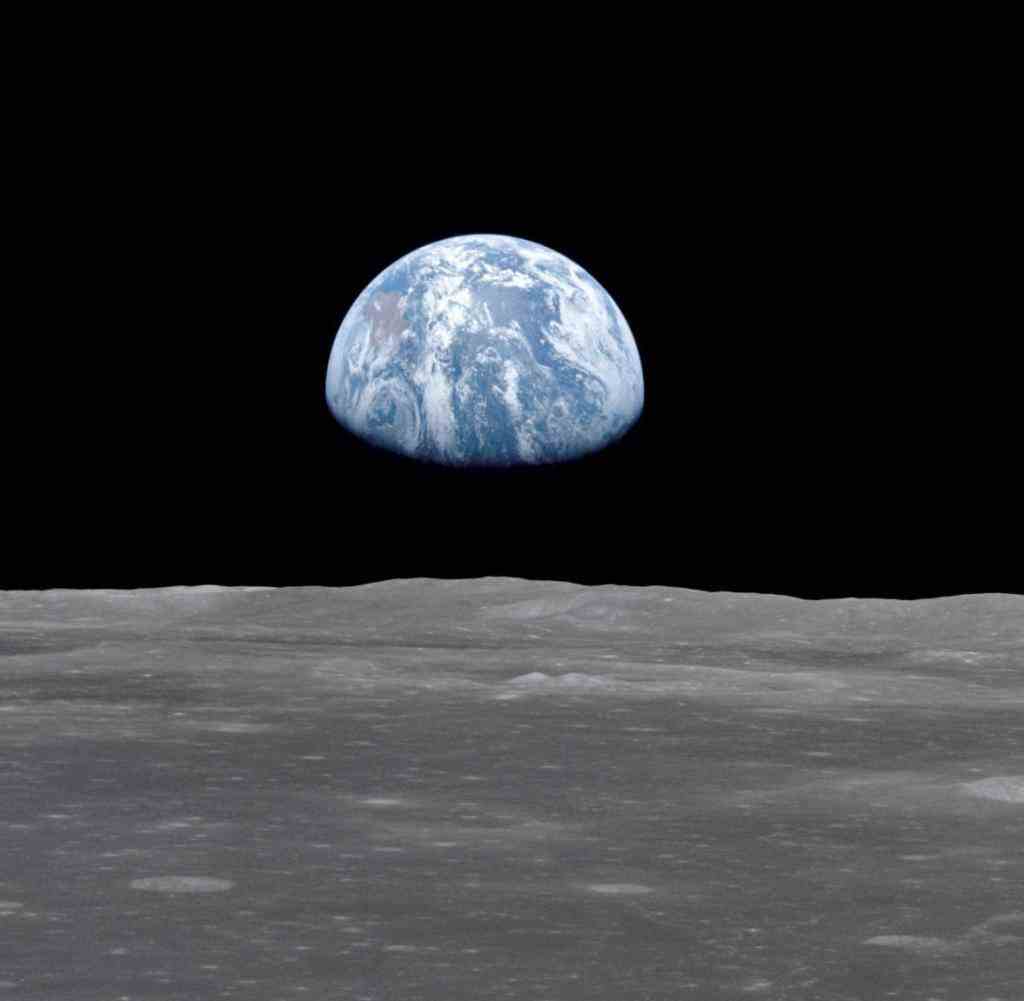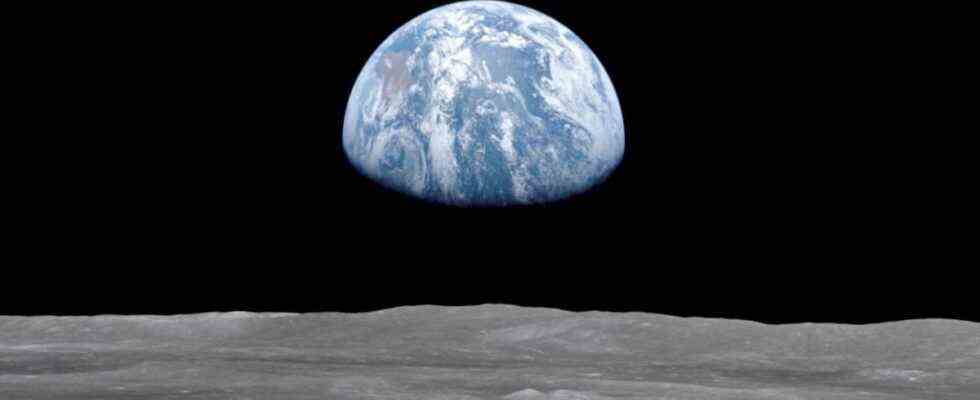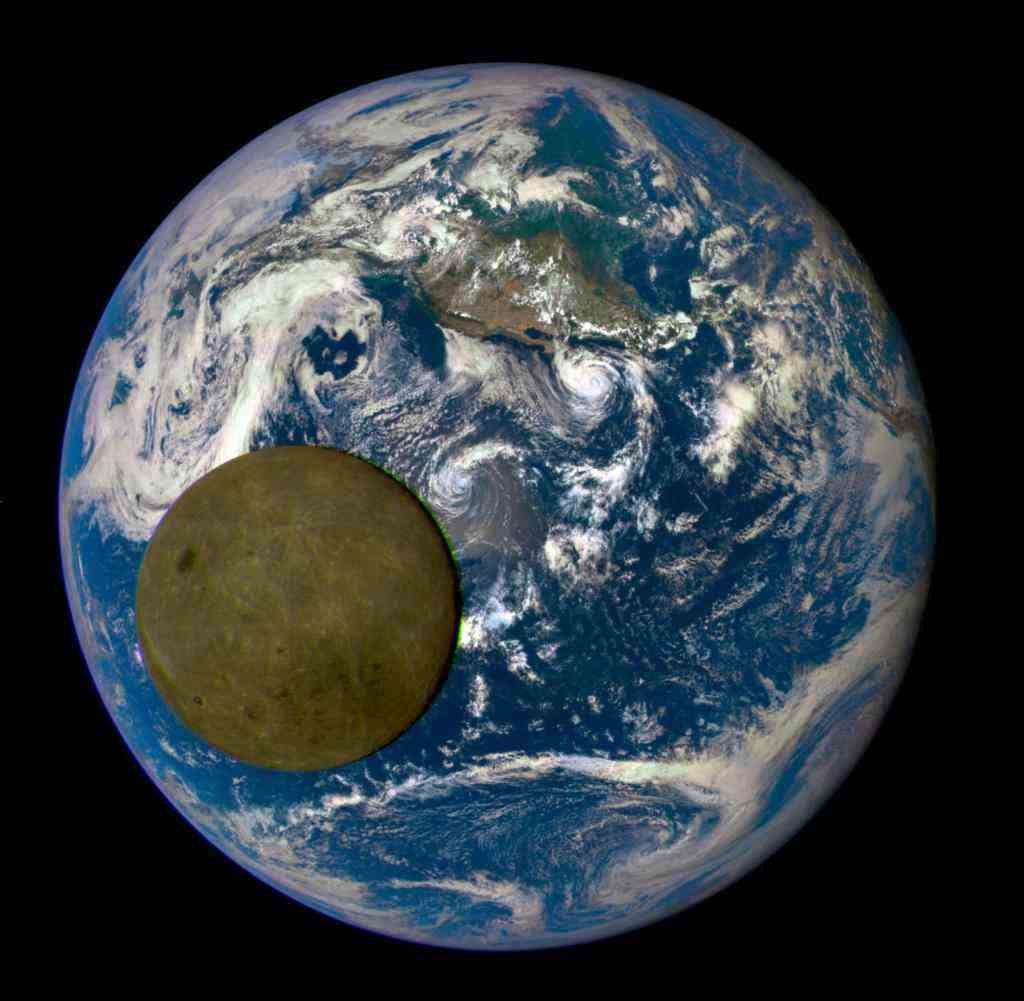Only small planets have large moons

Rising earth on the moon horizon. The photo was taken in 1969 during the Apollo 11 mission
Source: HUM Images/Universal Images Group via Getty Images
The size ratio of planets to their moons affects whether life is possible there. That the earth has such a large moon that stabilizes the earth’s axis of rotation seems to be the exception.
Dhe moon is about a quarter the size of the earth – and thus a special case in our solar system: all other moons have a much smaller diameter than the planet they orbit. US researchers have now clarified why this is so with computer simulations.
Only planets with a maximum of about one and a half times the diameter of Earth have enough solid and liquid matter left over after a collision with a larger body to form a large moon. This finding helps in the search for planets with large moons in other stars, the researchers write in “Nature Communications”.
“The moon stabilizes the axis of rotation of the earth and thus also contributes to a stable climate on our planet,” write Miki Nakajima from the University of Rochester and their colleagues. Many scientists therefore suspect that a moon that is large compared to the planet could play a role in the emergence of life.
Researchers are looking for moons near exoplanets
That is why astronomers are not only looking for planets around other stars, but now also for planets with moons. This raises the question of which planets are the most worth spending valuable observing time searching for exomonds.
There are candidates for exomonds on some larger exoplanets, but no definitive proof so far. Another system like that of the earth and moon with its special size ratio is not yet known.
According to current knowledge, the moon of the earth is in the early days of the solar system due to the collision of the primordial earth with the protoplanet, which is about the size of Mars Theia developed.
Debris from this collision – mostly remnants of Theia, but also bits of Earth’s crust – has collected in a sort of disc in Earth’s orbit. This is where the moon came from.
The simulated crash of Earth and Theia
For years, astrophysicists have been using computer simulations to study how such a collision takes place as a function of impact speed and impact angle. Nakajima and her colleagues looked at another aspect, namely the influence of the size of the planet hit.
It was shown that the ejected matter from planets with 1.3 to 1.6 times the diameter of Earth evaporates almost completely. “A larger moon cannot form in such a disc of steam,” the researchers say.
The image taken by the Deep Space Climate Observatory shows the size ratio of the Earth and the Moon
Source: Universal Images Group via Getty Images
The question remains why of the four inner planets of our solar system whose size is below the found limit, only the earth has a large moon. “Our simulations only show that planets above the limit cannot form large moons,” emphasizes Nakajima.
“That does not mean that such moons must form on all planets below the limit.” Whether such a moon actually forms depends on many other factors, such as the distance to the central star.
Evidence of the Abundance of Life in Space
“Our results help to select suitable candidates for the search for exomonds,” say the researchers. And they also provide an explanation as to why only a few indications of exomonds have been found so far: the search for such companions was mainly carried out on larger planets.
The next goal of the search for exomonds is now to find out how common systems similar to the earth with its large moon are – and thus perhaps also to obtain indications of how often life could arise in the cosmos.



